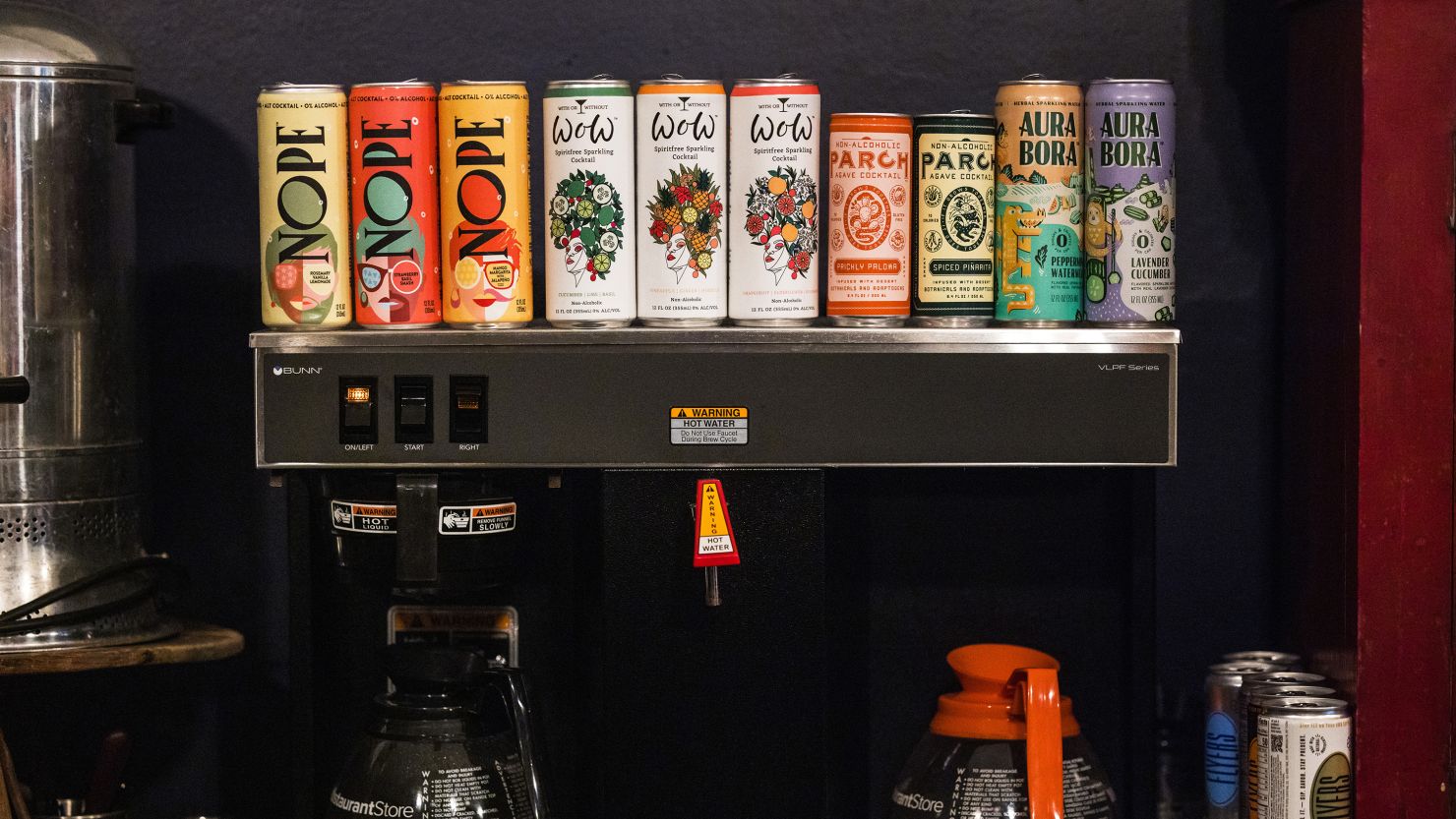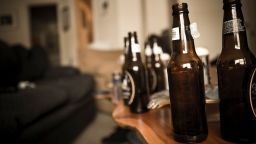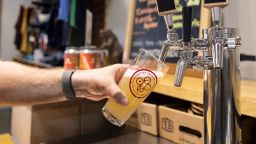On its surface, The Zero Co looks like any other bottle shop.
It’s a small space, just 600 square feet, with wide windows welcoming the sunlight. Wooden shelves line the white walls, holding rows of glass liquor and wine bottles, bitters, six packs of beer, seltzer, and the like. Some sport the colorful, bespoke labeling that has become synonymous with millennial marketing; while others are more traditional in their packaging, simply stating “Napa Valley,” “Red Blend” or tasting notes: pink grapefruit, hibiscus, wild seaweed.
It’s only on closer inspection that you would notice. “Non-alcoholic botanical spirit.” “Dealcoholized wine.” “Zero proof.”
The Zero Co, as its name suggests, is a bottle shop totally devoted to non-alcoholic beer, wine and spirits — like a zero proof liquor store. Opening in 2022 and situated in the trendy Poncey-Highlands neighborhood of Atlanta, The Zero Co advertises itself as the city’s first non-alcoholic bottle shop — but it is part of a growing trend both in Atlanta and across the country.
The number of people choosing to opt-out of alcohol, whether temporarily or permanently, has grown, and with it, the normalization of being alcohol-free. Restaurants have expanded mocktail lists, sober bars are on the rise, and non-alcoholic bottle shops are popping up in most major cities. These aren’t thoughtless alcohol replacements. With a level of care and craft — often with a price point matching their alcoholic counterparts — these substitutions are much, much more than a shirley temple.
More people want to drink less, data says
Amy Hook, a 46-year-old executive at an accounting firm, was browsing The Zero Co on a Friday afternoon. Alcohol just doesn’t improve her life, she told CNN, and sometimes it feels like it’s making things worse. A few weeks ago, she decided to cut back, and has been dabbling with making cocktails with non-alcoholic spirits. She doesn’t know if she’ll go back.
“I think there are a lot of people that are in my position, that are my age, where it’s like, alcohol just doesn’t feel good anymore,” she said.
She’s right; she’s not alone. While some people have given up drinking entirely, a growing number of people have expressed interest in cutting back their alcohol intake — a movement colloquially dubbed “sober curious.”
While the majority of adults over the age of 21 still drink occasionally — in 2022, 68.2% reported having at least one drink in the last year, according to the National Survey on Drug Use and Health, down ever so slightly from 70.7% in 2017 — an increasing number of Americans have reported trying to drink less, a potential sign that the way people drink is shifting.
Though research may be limited, the societal changes speak for themselves. One of the most popular signals has been the rise of Dry January, a trend that first took off around 2018, where people abstain from alcohol for the entire first month of the year. This type of “intermittent sobriety” is similar to the rise of intermittent fasting, said Colleen Myles, an associate professor studying fermented landscapes at Texas State University — people are choosing not necessarily to drink less, but to restrict their drinking at certain times.
But there are also those who have taken on the larger lifestyle change of “mindful sobriety,” Myles said, choosing to be more conscious of their drinking rather than abstaining completely.
“There’s this kind of negative connotation around people who have chosen to be sober or have needed to become sober due to health or mental health or addiction issues,” Myles said. “But these days, I think there are plenty of people, who do not have those strong countervailing reasons to not drink, that are choosing not to drink.”
Instead, drinking less — or not at all — is becoming more of a positive choice in some people’s life, in the same way others try to exercise more or eat better. Not drinking can become a part of self-optimization, Myles explained, where people try to become “the pinnacle of your best self.”
“It’s part of a whole package of wellness,” Myles said.
In part, the underlying cause of the shift could be the pandemic, she said. Alcohol sales jumped during those early months of lockdown, a well-documented trend, but research has shown that the sale of non-alcoholic beverages went up, too — revealing that many people were just drinking more of everything. People who may have experimented with mocktails in 2020 could have decided to stick with it. Or, the impact of a large-scale global health crisis may have nudged an inward reflection of their own health and well-being.
“Maybe people decided to try out different things because there was this weird global disruption going on,” Myles said. “And now some of those things, they were like ‘Hey, I actually like that.’”
From mocktails to dealcoholized wine
The shifting mindset around drinking is being reflected in the market. In addition to shops like The Zero Co, non-alcoholic beer has become widely available at big box stores and breweries alike. Some CVS stores have started carrying non-alcoholic liquor, while Target now sells non-alcoholic wine and spritzers. Actor Danny Trejo launched a line of zero proof gin and tequila alternatives last year.
It’s tempting to view these products as juice in a fancy bottle — poor imitations of the real thing. Doing so would be reductive.
Many non-alcoholic alternatives require a lot of effort to make, said Cory Atkinson, who co-owns The Zero Co and the alcoholic bottle store Elemental Spirits Co with his wife Malory. Much of non-alcoholic wine and beer actually starts out as alcoholic, and is then dealcoholized as an extra step. For spirits, there are scientists recreating the mouthfeel of alcohol with non-alcoholic components, stripping the spirit down to its core and recreating that flavor.
“There’s just so much research and development that goes into the products for you to be able to taste that and be like, ‘Yeah, it kind of tastes like gin,’” Atkinson said.
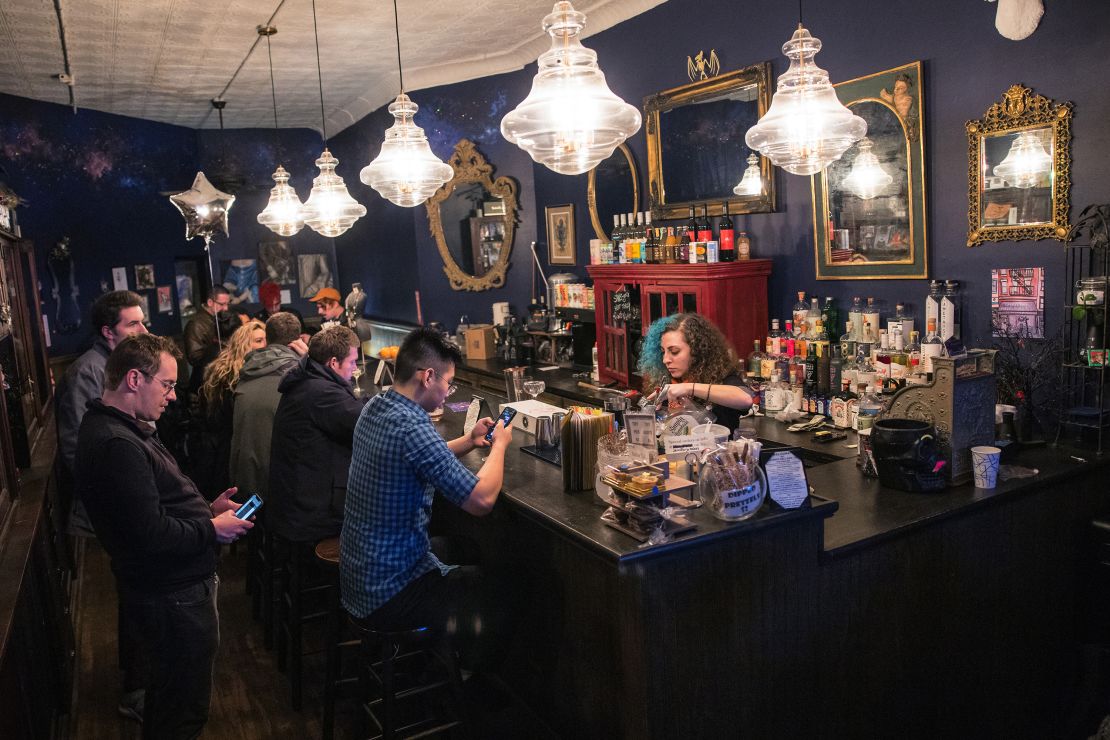
Most of their customers are not necessarily cutting out alcohol entirely, just in certain situations. Atkinson, who still drinks, said he used to have a beer or two while cooking, but he now reaches for non-alcoholic options instead.
“My mind wants that experience and wants that ritual,” he said. “But my body is like, ‘I don’t really need the alcohol for that.’”
Some spirits replace the alcohol with adaptogens, things like reishi mushrooms or ashwagandha, used to reduce stress or increase energy. Others contain varying doses of THC.
Erin Flavin owns Marigold, a non-alcoholic bottle shop in Minneapolis, Minnesota that also sells legal cannabis products. Flavin stopped drinking during the pandemic (she would have a drink to punctuate the end of the day, she said, but then “the end of the day kept getting earlier and earlier”) and opened the shop in 2022. She’s noticed that many people still struggle to understand those who don’t drink, either by getting defensive or questioning why someone would choose to abstain. But being inclusive of those who are alcohol-free shows care, she said.
And Marigold serves a diverse clientele. The cannabis products appeal to those both young and old, as it can help with sleep, while others prefer the adaptogenic drinks or other non-alcoholic options. No matter what people are interested in, Flavin said, there’s always new avenues that non-alcoholic producers are exploring.
Though some might be concerned about experimenting with THC or cannabis instead of alcohol, Flavin noted that the worst that happens is “you get kind of tired and you go home and go to bed.”
“I think it’s important to have a place that’s not just going to sell you whatever,” Flavin said. “It’s going to educate you on what you’re getting.”
Regardless of whether these spirits are infused with other substances, bars and restaurants have also begun experimenting with their offerings. Burle’s Bar in Atlanta serves a mocktail with a house-made balsamic shrub, basil, and ginger beer. Nubeluz, José Andrés’s effort located inside New York’s Ritz-Carlton hotel, serves multiple cocktails made with varying non-alcoholic liquor brands. At longtime Chicago bar The Long Room, locally-made CBD seltzers are available to order alongside non-alcoholic beers, as well as a mocktail featuring apricot syrup and coconut milk.
The demand for non-alcoholic options isn’t entirely new. There were always people who didn’t drink, Myles, the professor, said — either because of addiction, certain medication, being pregnant, religion, needing to drive, working afterward, or a myriad of other reasons. They were just an afterthought.
Myles, who lives in Texas, recalled going to a brewery that also sold cans of non-alcoholic beer. She was stunned by the number of people who bought a can while hanging out — paying a premium for it in the same way you would an alcoholic beer.
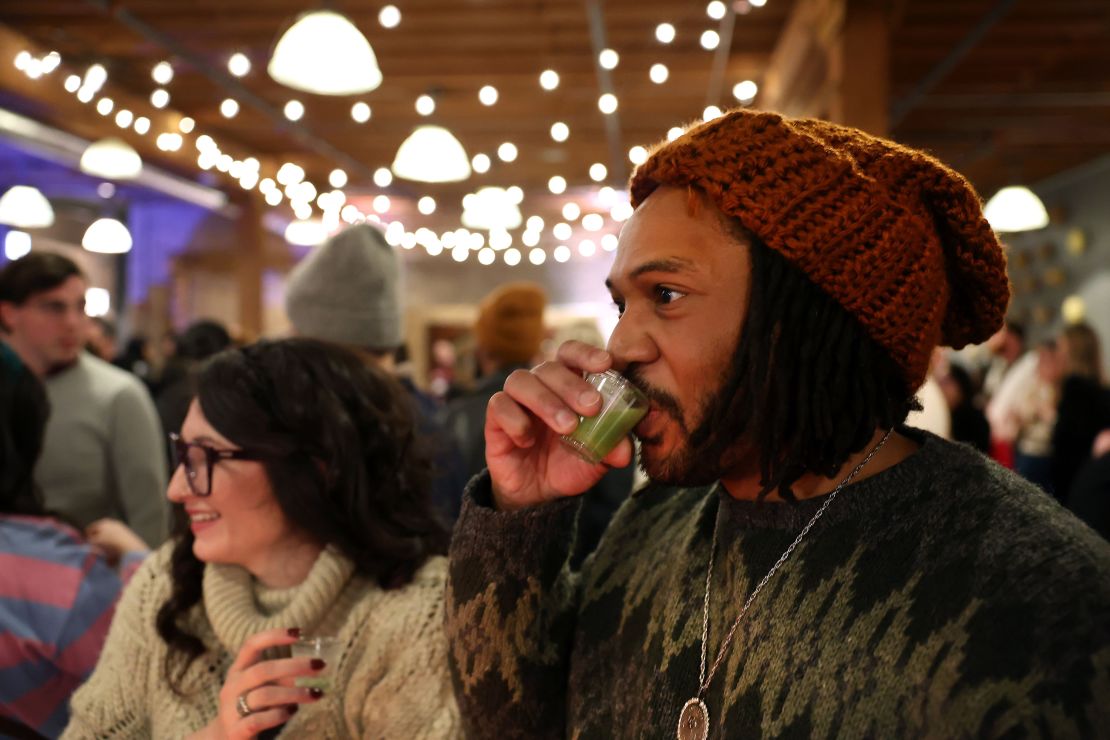
“They want to be in this ambiance, around the music, for example, with other people that are there,” Myles said. “They also want to be a part of the social fabric.”
In the past, that may have meant settling for water or a soda — or even eschewing the experience altogether. But now, enough people order non-alcoholic beverages, Myles said, that it’s become a regular expectation.
The trouble with rising costs
Chris Copeland, 35, is a consultant in Atlanta currently taking a break from alcohol. It’s been about six months, he said, and it began mainly out of interest for his mental health and his quality of sleep, both things alcohol can negatively impact.
As a drinker, Copeland really enjoyed mezcal and bourbon, things he hasn’t quite found good replacements for yet. But non-alcoholic beers have gotten “decently close.”
“Stuff like this,” he said, gesturing to a few non-alcoholic spirits priced north of $35, “I still struggle with the price point.”
Price is a major deterer for many people who might be interested in exploring more non-alcoholic options. Bottles are often priced just as much, if not a little more, than their alcoholic counterparts.
That’s because most brands who make these products are small, producing a mere fraction compared to larger labels — who can maximize their production to minimize cost.
“A lot of these things are hand labeled, they’re hand bottled,” Atkinson, of The Zero Co, said. “A lot of effort has to go into it in order to create this product, just to get it on the shelf.”
And for non-alcoholic wine, it’s not uncommon for producers to buy wine from Spain or Italy, send it to Germany to dealcoholize it, and then bottle it in England — all before it gets shipped to the US. With all those stops, it can be difficult to produce a non-alcoholic wine for under $20.
The price point can be hard for restaurants and bars, too. Because there’s no cheaper version of these non-alcoholic spirits, using them can drive the price of a mocktail up, sometimes to even more than the alcoholic version. For patrons, it can be frustrating, and also a barrier for people looking to experiment. Who gets to try these fancy mocktails, and who falls back on soda?
Yet the demand persists. At The Zero Co, sales in its first year were three times what Atkinson had predicted. Customers from across state lines come into Marigold searching for alternatives. And non-alcoholic options are still increasingly finding their way onto menus and in bars.
After settling on a non-alcoholic spirit infused with lemon and cucumber, and a few other mainstays, Hook — the accounting executive — pulls out a card to pay for her goods. With the weather getting warmer, she’s been craving a negroni, she said, but didn’t want to go back into the world of alcohol just yet.
“I’ve been off everything for a couple of weeks now,” she said. “I’m trying to just open my eyes to what life could be like without anything.”
The new way to drink, it seems, is alcohol-free.

